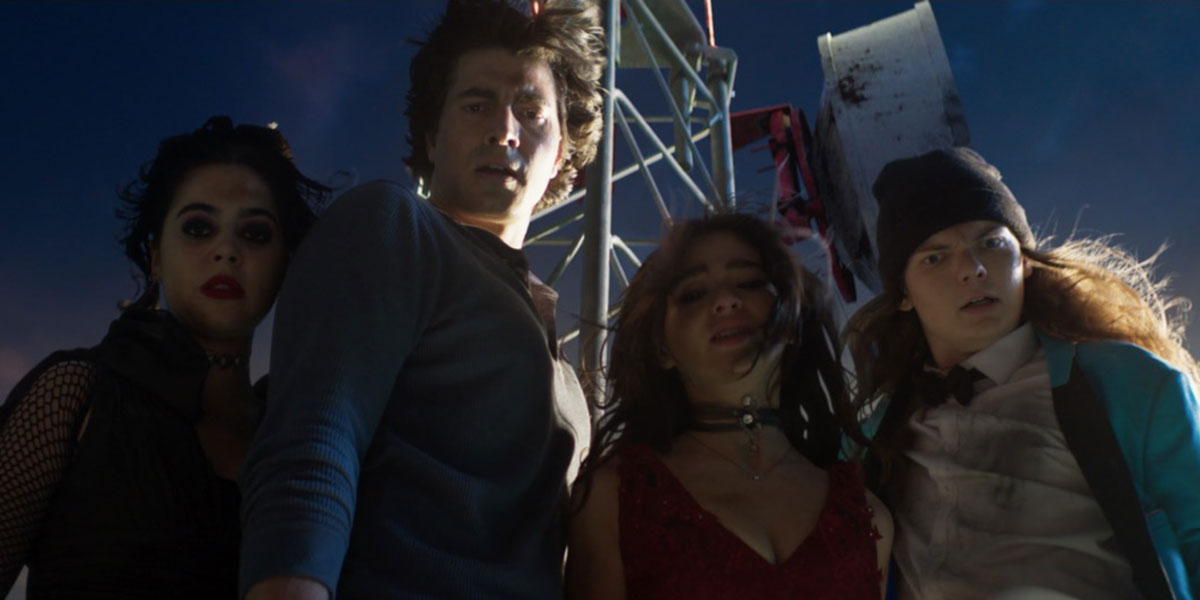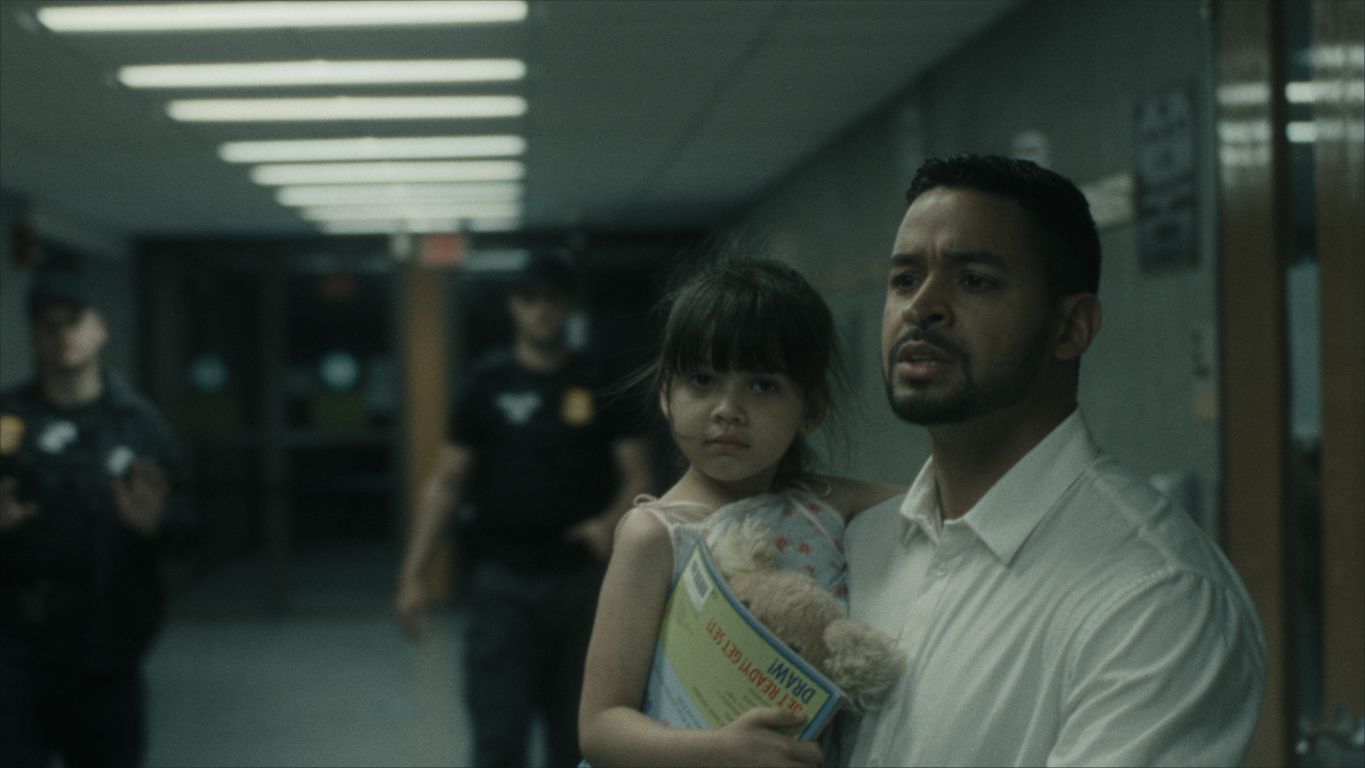TIFF 2024: Daniela Forever, Can I Get a Witness?, Ick
On three unique sci-fi films from this year's TIFF.

One of my favorite subgenres of films to watch at festivals is speculative sci-fi, particularly those from BIPOC filmmakers. Nothing best gets a viewer into a director’s mind than watching a film where they try to prototype the future on-screen. Alternate realities abound at TIFF but the three featured here all feature Asian creatives behind and/or in front of the camera. Though disparate in their level of wackiness, these worlds offer a blueprint for overcoming relational, ecological, or societal grief.
The most visually interesting of the three is “Daniela Forever,” courtesy of Spanish director Nacho Vigalondo. His first feature film since 2014’s “Colossal,” “Daniela Forever” sees Vigalonodo exploring how our desires to be known and seen are ironically the source of our alienation. Henry Golding plays a bereaved man in Madrid, Nick, who is reeling from the loss of his girlfriend, Daniela (Beatrice Grannò). To cope, he enrolls in an experimental drug program that enables him to encounter Daniela through lucid dreaming. While Daniela starts in his dreams merely as a mixtape of out-of-order memories, gradually, Nick uses the power of the drug to create new memories with her in the dream world, making it difficult to discern what happened in real life and what Nick himself concocted.
Nick’s desperation to rebuild a life with Daniela, even if it only exists in his dreams, speaks to the ways we grant significance to memories we ordinarily wouldn’t give a second thought. Strikingly, when Nick is awake, the film turns to a grainy, 4:3 aspect ratio, dull and lifeless, while his dreaming is depicted in a wider, boldly-colored frame. It’s a clever subversion, showing how it’s tempting to invest in fleshing out a fantasy rather than spending time in the real world. Vigalondo challenges that we all have to wake up sometime, no matter how deep our grief.

“Can I Get A Witness?” by director Anne Marie Fleming takes place in a most different world–but hauntingly, not too far off–from our own. In the film, although war, poverty, and hunger are non-existent, such benefits come at a cost: those who reach the age of 50 are ordered to end their lives by the government to minimize the amount of resources being consumed. Youth are recruited to artistically document the final moments of those past. We follow Kiah (Keira Jang) and her co-worker, Daniel (Joel Oulette) as they perform the last rites. Sandra Oh also makes a strong supporting turn as Kiah’s mother, Ellie, who is on the precipice of turning 50. Oh perfectly captures that tension between having a radiating daughter and wanting to hold empathy for the burdensome vocation that’s been assigned.
Fleming’s world is beautifully rendered thanks to cinematographer C. Kim Miles’s free-flowing lens; it always seems like the sun is shining and Miles frequently rests his camera on the abundant foliage (a sign of a prosperous and healing planet) and the ways it reflects natural light. An interesting touch, though one that rarely serves a task beyond a visual flourish, is the use of animated sequences whenever Kiah documents a moment. In multiple sequences, the drawings she writes literally fly off the page and take on lives of their own; these are beautiful gestures tinged with deep sadness, an unnerving reminder that the prosperity that we see on-screen is only possible through extensive, state-sanctioned death.
Fleming’s film would have been tighter if it allowed its characters to grapple with that reality rather than feel the need to provide an origin story for the world we see. Ultimately, “Can I Get a Witness?” is undone by its need to explain itself, giving its characters the kind of dialogue that’s always meant to provide some backstory about how the world got to the way it is. As a result, it never feels like the characters are having a normal conversation.

By far, the biggest disappointment of the three is “Ick” directed by Joseph Kahn, which has all the thematic subtlety of a sledgehammer to the face and is just about as pleasant. Playing as part of Midnight Madness, it focuses on residents of the rural town of Eastwood who have been invaded by an invasive alien entity, referred to as “the ick.” The ick as we meet it in the present day is mostly harmless, manifesting in the form of vine-like clusters that sprout randomly along the streets of the town. Brandon Routh stars as Hank Wallace, a science teacher; he and another student Grace (Malina Weissman) are the only ones in Eastown suspicious about the ick’s innocuous latency. Their distrust is vindicated when the ick begins to violently possess or murder the people of their town.
The sprawling, formless entity at the center of “Ick” becomes an apt metaphor for the problem of the film as a whole in that its many problems are so interwoven that it’s hard to point to one key issue. The film moves at such a breakneck pace, which makes it difficult to feel invested in any of the arcs of its characters. When the film slows down to try to earn dramatic moments, it feels tonally jarring and inconsistent, and they’re immediately undercut by a one-liner or juvenile joke. Without giving its characters (or the plot) a chance to develop, Kahn frequently makes up for lost narrative stakes by incorporating early 2000s needle drops to an aggressive degree, as if the mere presence of such tracks makes a scene epic.
There’s rife potential for commentary here, namely in the ways Kahn tries to draw a parallel between the apathy people had for COVID with the apathy people hold for the ick. But simply naming a parallel isn’t enough to be profound, and, too often, he seems content with simply making an allegory rather than doing anything interesting with it. Even the brief moments of gory glee that one would expect from a Midnighter title are undone by unfinished and poor CGI. This is most evident in a somewhat standout sequence where the ick first attacks. There’s some primal glee in seeing bodies shredded with wanton abandon (and cinematographer David Weldon Jr. captures a uniquely brutal shot of the POV of an ick “vine” as it bulldozes through several bodies). But the ropey CGI fails to make the threat of the ick feel tangible or lived in. Kahn shared that he had finished work on the film just days before the film’s premiere at TIFF; here’s hoping that between then and the film’s wide release, he reworks the great concept of “Ick” into something more palatable.



















